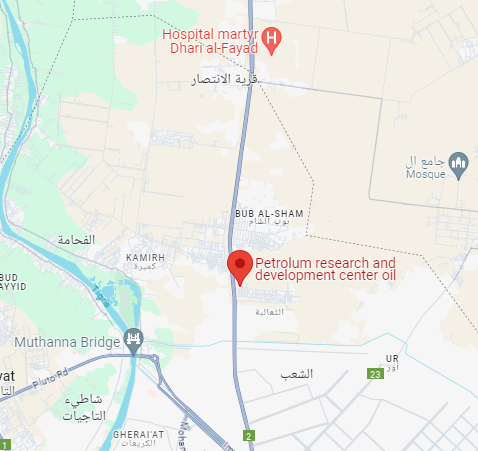Improving the Quality and Production of Reformate
DOI:
https://doi.org/10.52716/jprs.v15i2.935Abstract
One of the primary and most crucial units in Iraqi refineries is the gasoline reforming unit. In order to simulate and upgrade the conventional unit to the other unit configuration (Continuous Catalytic Regeneration Reformer Process (CCRRP)), it was suggested in this study to develop the gasoline reforming unit (Semi-Regenerative Catalytic Reformer Process (SRCRP)) by adding a fourth reactor (fixed bed reactor) of the same size and configuration for the last reactor of the unit that is currently used in the refinery. This study aims to investigate the effect of increasing the number of reactors on product quality. Several variables were studied in the unit, including temperature (490, 500, 510, 520, 530, and 540 ºC), pressure (8 & 12 bar), Liquid Hourly Space Velocity (LHSV) 1.5 & 4.5 hr-1, catalyst type (spent and fresh), and catalyst regeneration and pre-preparation steps (carbon burning + drying + oxychlorination + calcination + reduction + sulfiding). The results showed that the maximum increasing of RON values is 10 degrees under 12 bar and 4.5 hr-1 by applying all the regeneration and pre-preparation steps with exception of oxychlorination (for spent catalyst) but with short life period of this catalyst comparing with fresh catalyst which have high activity for long interval with 8 grades increasing in RON. In addition, the RON of the reformate at (12 bar) was higher than the octane number at (8 bar). Otherwise, the RON does not differ significantly between the two LHSV values tested (1.5 and 4.5 hr-1), indicating that the LHSV had no major influence on the product's octane number for reformate improvement by adding fourth reactor. According to the catalyst regeneration and pre-preparation method, the results indicate that the highest and longest improving of octane number was obtained when a fresh catalyst was applied in the unit by performing the pre- preparation processes which include (drying + reduction + sulfiding) for it, followed by spent catalyst with all the activation steps which include (carbon burning + drying + oxychlorination + calcination+ reduction + sulfiding).
References
H. A. Elsayed, M. F. Menoufy, S. A. Shaban, H. S. Ahmed, and B. H. Heakal, "Optimization of the reaction parameters of heavy naphtha reforming process using Pt-Re/Al₂O₃ catalyst system", Egyptian Journal of Petroleum, vol. 26, no. 4, pp. 885–893, Dec. 2017. https://doi.org/10.1016/j.ejpe.2015.03.009
G. J. Antos and A. M. Aitani, “Catalytic Naphtha Reforming, Revised and Expanded”, CRC Press, 2004.
M. A. Fahim, T. A. Al-Sahhaf, and A. Elkilani, “Fundamentals of Petroleum Refining”, Elsevier, 2009.
"Catalytic reforming of gasoline fractions: combining isomerization and dehydrogenation", Chemical Reaction Technology, Berlin, München, Boston: De Gruyter, pp. 191-196, 2015. https://doi.org/10.1515/9783110336443-009
K. Kolmetz, “Refinery Catalytic Reforming Unit Selection, Sizing and Troubleshooting”, Kolmetz Handbook of Process Equipment Design, 2017.
M. R. Talaghat, A. A. Roosta, and I. A. Khosrozadeh, "A novel study of upgrading catalytic reforming unit by improving catalyst regeneration process to enhance aromatic compounds, hydrogen production, and hydrogen purity", Journal of Chemical and Petroleum Engineering, vol. 51, no. 2, pp. 81–94, 2017. https://doi.org/10.22059/jchpe.2017.211623.1168
M. A. Fahim, T. A. Alsahhaf, and A. Elkilani, "Catalytic Reforming and Isomerization", in Fundamentals of Petroleum Refining, Elsevier, pp. 95–122, 2010.
A. A. Jassim, E. and A. Al-Hamdani, "Improving the quality of gasoline production in catalytic reforming processes for Basrah Refinery", 13th Iranian National Chemical Engineering Congress & 1st International Regional Chemical and Petroleum Engineering, Kermanshah, Iran, 25-28 October, 2010.
K. A. Sukkar, S. R. Raouf, and R. S. Hamied, "Investigation and simulation of catalytic reforming reactions of Iraqi heavy naphtha using Pt-Sn/Al₂O₃ and Pt-Ir/Al₂O₃ catalysts", Engineering and Technology Journal, vol. 33, no. 12, pp. 57-80, 2013.
S. O. Oyekan and L. Moorehead, "Optimized pretreatment procedures for reforming catalysts", AIChE Natl. Mtg., Houston, TX, vol. 11, no. 182, pp. 159-182, Apr. 1991.
B. S. Babaqi, M. S. Takriff, S. K. Kamarudin, N. T. A. Othman, and M. M. Ba-Abbad, "Comparison of catalytic reforming processes for process integration opportunities: Brief review”, International Journal of Applied Engineering Research, vol. 11, no. 19, pp. 9984-9989, Jan. 2016.
A. Z. Yusuf, B. O. Aderemi, R. Pateland, and I. M. Mujtaba, "Study of industrial naphtha catalytic reforming reactions via modelling and simulation", Processes, vol. 7, no. 4, p. 192, Apr. 2019. https://doi.org/10.3390/pr7040192
D. S. J. Jones and P. R. Pujado, “Handbook of Petroleum Processing”, Springer Science & Business Media, 2015. https://doi.org/10.1007/1-4020-2820-2
S. Raseev, “Thermal and Catalytic Processes in Petroleum Refining”, CRC Press, 2003.
I. J. Otaraku and I. L. Egun, "The effect of temperature on aromatic yield of treated heavy naphthene from Bonga aromatic crude", International Journal of Research in Engineering and Science, vol. 5, no. 5, pp. 46-50, May 2017.
Z. M. Shakoor, "Optimization of Al-Doura catalytic naphtha reforming process using genetic algorithm", Engineering and Technology Journal, vol. 31, no. 7A, pp. 1276-1296, 2013. https://doi.org/10.30684/etj.31.7a5
S. Matar, L. F. Hatch, “Chemistry of Petrochemical Processes”, Elsevier, 2001.
Downloads
Published
How to Cite
Issue
Section
License
Copyright (c) 2025 Zeinab T. Abdulwahhab, Qais J. Jawad, Yazen M. Ali, Hadeel H. Aliyawaer, Qaiser L. Thiab

This work is licensed under a Creative Commons Attribution 4.0 International License.














